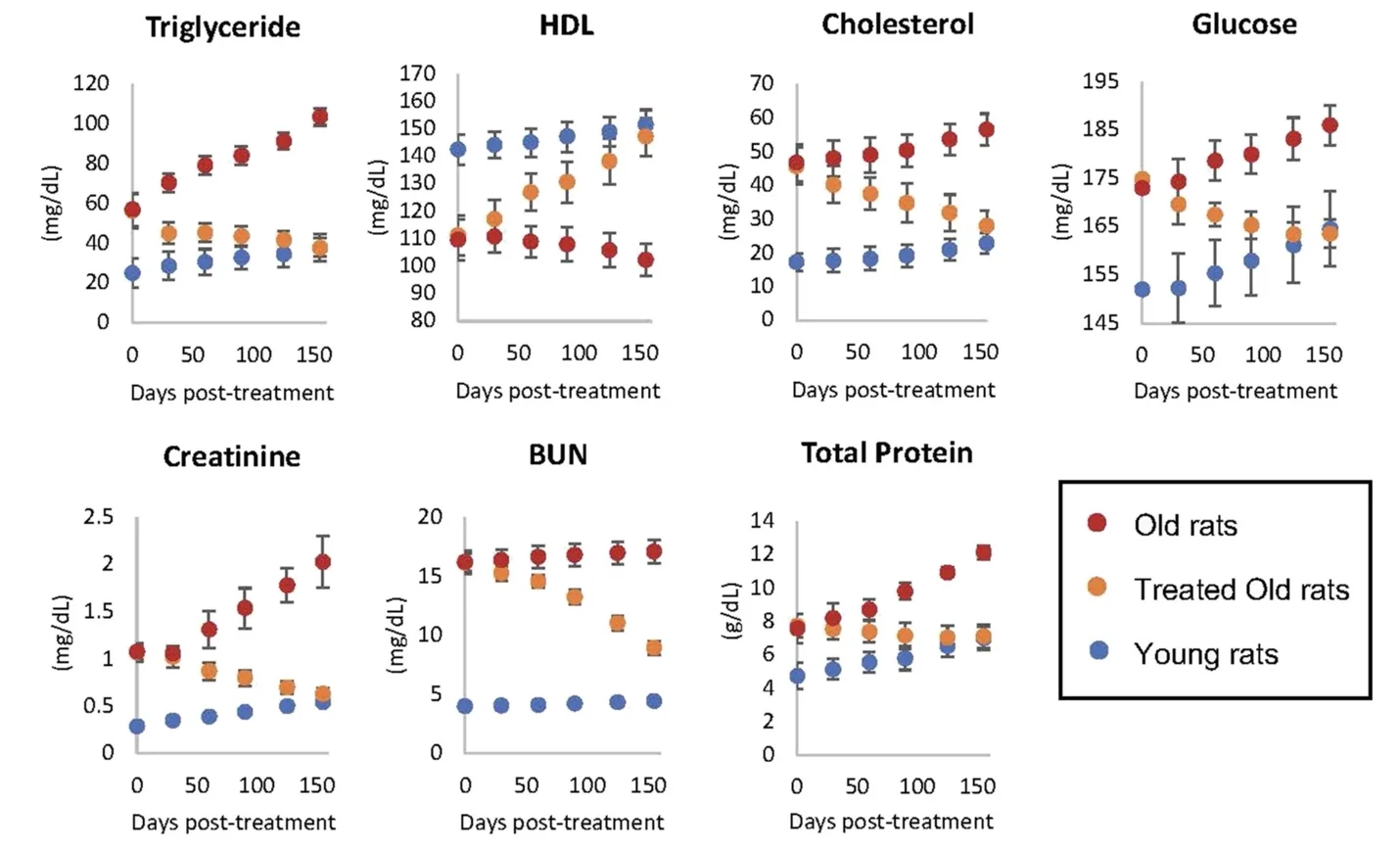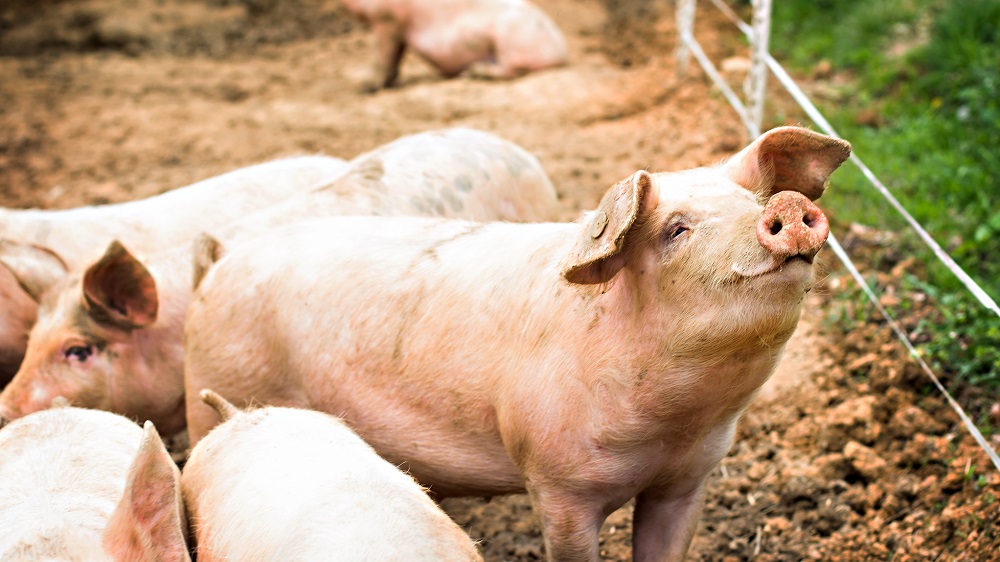A new study used a plasma fraction from young pigs to robustly reduce the biological age of old rats. This could potentially open doors to rejuvenation in humans [1].
The blood connection
People have been trying to use young blood to rejuvenate old organisms for millennia, but only in recent years has this concept been scientifically validated. In heterochronic parabiosis, a young mouse and an old mouse are surgically connected to each other in order to share vasculature, and this has been found to rejuvenate the old mouse and make the young one age faster [2]. Stitching people together is obviously impractical, and no one would want to be the young parabiont that’s getting older; however, scientists have been developing less invasive ways to recapitulate the rejuvenating effects of heterochronic parabiosis, such as blood plasma exchange.
In this interesting new paper, which includes the two prominent geroscientsts Steve Horvath and Harold Katcher as its corresponding authors, researchers treated old rats with an exosome-containing plasma fraction from the blood of young adult pigs. Exosomes are tiny lipid bubbles that are secreted by cells and carry various molecular cargo, such as RNA and proteins. They are an important element of intracellular communication. Previous research has shown various rejuvenating effects of young exosomes [3].
Robust epigenetic age reversal
Old rats received two series of four injections of an exosome-containing blood fraction that the researchers call E5. The first series was administered for eight days at the beginning of the experiment, and the second one started 95 days later. The overall length of the experiment was 155 days. The researchers measured the treatment’s effect using several tailor-made epigenetic clocks, which measure biological age by analyzing changes in the epigenome.
“Plasma treatment of the old rats”, the researchers report, “reduced the epigenetic ages of blood, liver, and heart by a very large and significant margin, to levels that are comparable with those of the young rats.” According to the six epigenetic clocks used, the treatment rejuvenated liver tissue by 74.6% on average, blood by 64.3%, heart tissue by 46.5%, and the hypothalamus by 24.4%.
When DNA methylation profiles from the untreated controls were added to the clocks’ training set to make the clocks even more accurate, the effect sizes got bigger, with the liver at 77.6%, the blood at 68.2%, the heart at 56.5%, and the hypothalamus at 29.6%. The average rejuvenation across the four tissues was 67.4%. “In other words, the treatment more than halved the epigenetic age”, the researchers note.
One-two punch approach
While epigenetic clocks, when implemented right, are considered a robust measure of biological age and rejuvenation, the researchers ran a battery of additional tests several times over the course of this experiment. Many of the parameters, such as the lipid profile and blood glucose, were greatly improved by the treatment, converging by the end of the experiment with those of young controls:

Despite the epigenetic age reversal being relatively modest in the hippocampus, the treatment led to a significant improvement in cognitive function as measured by a Barnes maze, in which rats are required to find the exit. Interestingly, after the first series of injections, the initial improvement gradually disappeared, but the second series resulted in a more robust and prolonged effect. The researchers concluded that this “one-two punch approach” is crucial for sustained rejuvenation.
A similar picture was observed with inflammation: levels of pro-inflammatory cytokines measured by the scientists dropped sharply after the first treatment, then crept back up, and then were brought down again by the second treatment. This time, the levels plateaued until the end of the study.

Markers of oxidative stress, a major factor in age-related degeneration, as well as markers of liver and kidney function, were robustly affected by the treatment, almost converging by the end of the study with those in young controls. While there were certain sex-related differences in how rats reacted to the treatment, it generally worked well in both males and females.
Investigating the contents of the plasma fraction used in the study, the researchers found that it was abundant in long non-coding RNAs. With age, the cellular secretome undergoes changes, including a reduction in longer transcripts. The researchers hypothesize that their treatment works by helping rectify this disparity, although this demands further investigation.
Pigs to humans?
The importance of successful rejuvenation of one mammalian species using blood plasma from a different species is hard to overstate. “Not only does this reinforce the universality of the aging process in different mammalian species”, the authors conclude, “but it also demonstrates that the source of the rejuvenating material can be readily obtained from species other than humans, which will greatly address the issue of supply, economics, and ethics, which would otherwise be highly challenging.”
Literature
[1] Horvath, S., Singh, K., Raj, K. et al. Reversal of biological age in multiple rat organs by young porcine plasma fraction. GeroScience (2023)
[2] Conboy, M. J., Conboy, I. M., & Rando, T. A. (2013). Heterochronic parabiosis: historical perspective and methodological considerations for studies of aging and longevity. Aging cell, 12(3), 525-530.
[3] Sanz-Ros, J., Romero-García, N., Mas-Bargues, C., Monleón, D., Gordevicius, J., Brooke, R. T., … & Borrás, C. (2022). Small extracellular vesicles from young adipose-derived stem cells prevent frailty, improve health span, and decrease epigenetic age in old mice. Science Advances, 8(42), eabq2226.







